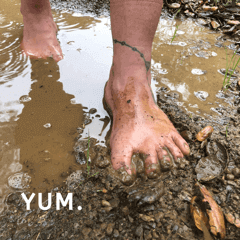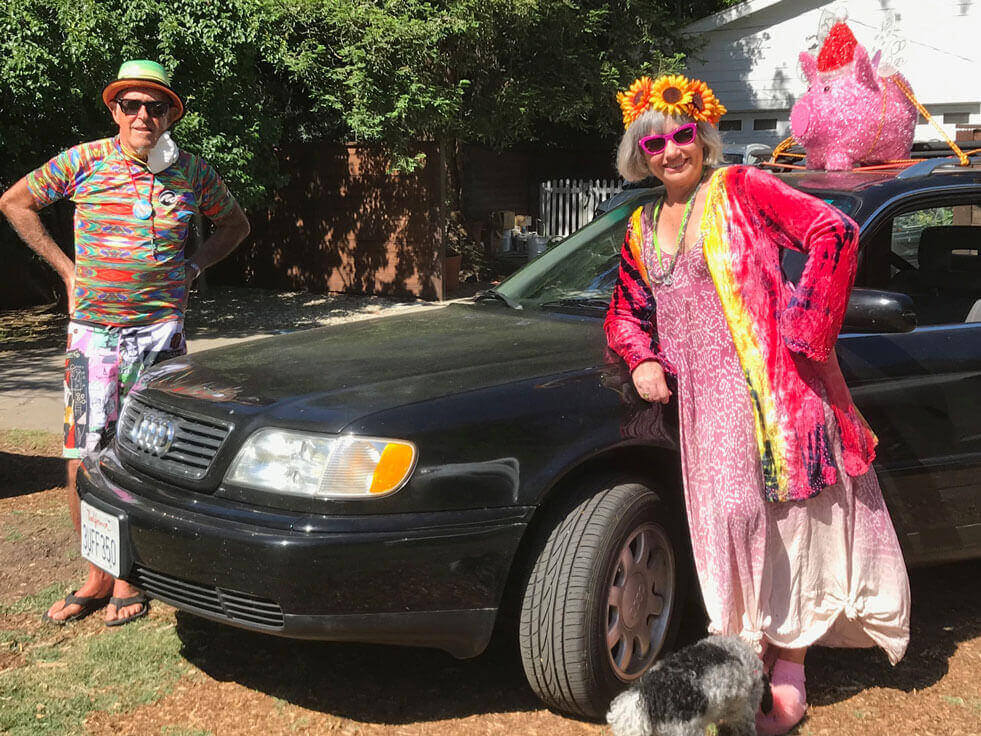Ecotherapy: Keeping Nature Close | |
Ecotherapy: Keeping Nature CloseThe term ŌĆ£tree-huggerŌĆØ conjures images of hippies in bell-bottoms and tie-dyed tee-shirts. Actually, the phrase dates back to 1730, when more than 350 people in India hugged the trees in their village to block loggers from cutting them down to build a palace. The KingŌĆÖs men beheaded more than 300 people, but the villagers would not give in. Ultimately, the King apologized.
Why were so many willing to die for trees? On this occasion, they risked everything to protect the forest because of the life-supporting resources it provided - mainly fuel and building materials. We have learned much more about the array of gifts nature has to offer, since these tree-huggers first wrapped their arms around those tree trunks.
Simply spending time in the natural world may reduce the risk of type II diabetes, heart disease, stress, high blood pressure, anxiety, and depression. Based on a growing body of research surrounding this topic, ecotherapy, or green therapy, has become increasingly popular with traditionally trained therapists and their clients.
When looking for an ecotherapist, first consider whether the blue of large bodies of water like a lake or the ocean calls to you, or if you crave the dappled greens of the forest. Most people have a clear preference, and so do nature-based therapists.
ŌĆ£The beach is my happy place,ŌĆØ says Dr. Maria Nazarian, The Beach Therapist. Her belief in the value of working with clients as they walk barefoot in the sand is so strong that she gave up her traditional office. ŌĆ£The beach does more than half the work for me,ŌĆØ she says. ŌĆ£Simply being in nature stimulates the production of serotonin, a neurotransmitter that improves mood, sleep, and memory. Nature also elicits joy, gratitude, and generosity, which lead to stress reduction,ŌĆØ explains Nazarian.
Liat Alon, associate Marriage Family Therapist, located her practice, The Wild & Authentic Path, in Topanga Canyon because the area offers easy access to a rich natural environment. Alon works in the green world. Hiking the canyons supports her clients in getting reacquainted with who they are underneath the influence of familial and social conditioning. ŌĆ£When we are in the purity of nature, all the external noise quiets. The wilderness regulates us. It gives us the space to find our balance,ŌĆØ Alon says.
Both Nazarian and Alon bring tools from modern therapeutic practice into the blue and the green. They each incorporate mindfulness practice, the art of training your mind to stay in the present moment, and psychotherapy techniques, like cognitive behavioral therapy. Exposure to the ocean or the trees enhances the benefits of these research-based therapeutic models.
Is nature therapy right for everyone? Though it might benefit everyone, some people may not be receptive to it. Dr. Nazarian says no one observing her with a client on the beach would recognize that they were in a session. She dresses casually and has bare feet. During part of the session, she leads the client through a grounding exercise and a guided meditation. The rest of the time is spent walking and talking.
To onlookers, they are just two people meditating and socializing. Still, if a client is too self-conscious, they may prefer the seclusion that office walls provide. If this is the case, Nazarian will refer that client to a more traditional, office-based colleague. |
 Alon agrees that while the benefits of therapy in nature cannot be denied, the client has to have a certain openness to a setting that breaks the mold of traditional therapy. She does continue to see people in more conventional places like sober living facilities, and even there she incorporates outdoor walks into her sessions when appropriate. With other clients she takes to the trails and even has womenŌĆÖs retreats planned that will span three days in the great outdoors. Each participant will carry on her back everything needed for survival. ŌĆ£WeŌĆÖll go out there to escape the noise, to get off the hamster wheel, to reconnect to that which holds true meaning in our lives,ŌĆØ says Alon. ŌĆ£The goal is to bring back into civilization what they uncover while out in the wildŌĆØ, she explains.
Of course, since access to nature has been restricted because of the coronavirus, both therapists are currently seeing clients in virtual domains. They long for the days when the threat has passed, and they can return to the blue and green worlds they love.
Over the course of our lifetimes, almost half of all Americans will experience mental health issues. We donŌĆÖt know yet whether the current pandemic will cause this number to rise even higher, but we do know the Department of Mental Health is bracing for an increase in crisis calls. Sadly, access to nature has been restricted at a time when we need its healing benefits most. Right now, it is even more necessary to find ways to gain access to even small doses of the wild world, and fortunately, this shouldnŌĆÖt prove too difficult for most people.  | For anyone lucky enough to have a yard, making time to garden or simply sit and soak in the sunshine will support well-being. Bringing flowers, potted plants, and tabletop water fountains into the home lifts the spirits and boosts physical health. These little glimpses of nature are not the same as trekking through a mountain forest or strolling along a coastline but incorporating even small natural elements into our restricted worlds ŌĆ£can have a powerful impact,ŌĆØ explains Alon.
Perhaps itŌĆÖs time to dig out the bell-bottoms and tie-dyed tees and find a local palm tree, jacaranda or magnolia to embrace. | | | | | | | | | | | | | |
|
|
|
|
|













